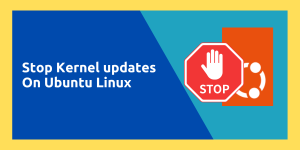
Introduction
In today’s ever-evolving digital world, keeping an eye on your systems’ performance is essential to keep things running smoothly. One of the best open-source monitoring solutions available today is Prometheus.
With its powerful alerting capabilities, you can keep an eye on potential issues before they turn into bigger problems. In this guide, we’re going to dive into learning how to handle Prometheus alerts, giving you the tools you need to keep an eye on your infrastructure.
Understanding Prometheus Alerts
Rules defined in Prometheus’ configuration are the basis for the Prometheus alert manager. These rules specify conditions under which alerts should be triggered, enabling proactive detection of anomalies or performance degradation.
| Aspect | Description |
| Significance of Alerting Rules | The heart of Prometheus’ alerting capability is its rules, carefully set up in the configuration. These rules determine when alerts should be triggered, making sure any problems are spotted and fixed quickly before they get worse. |
| Proactive Anomaly Detection | With Prometheus, proactive monitoring becomes possible. Instead of waiting for problems to become severe, you can anticipate them. By acting on alerts triggered by predefined conditions, you can address issues swiftly, minimizing their impact on system performance. |
| Rule Specification and Implementation | The process of defining alerting rules is straightforward within Prometheus. Through the configuration file, administrators can specify conditions such as CPU utilization surpassing a predefined threshold or a sudden spike in network traffic. These conditions act as triggers for alert generation, allowing for timely intervention. |
| Enabling Swift Incident Response | Prometheus’ alerting system is not just about detecting issues; it’s also about facilitating swift incident response. By promptly alerting relevant personnel to emerging problems, Prometheus ensures that corrective actions can be taken swiftly, minimizing downtime and optimizing system performance. |
| Continuous Monitoring and Improvement | Effective alerting in Prometheus is a continuous process. Administrators must regularly review and refine alerting rules to ensure their relevance and effectiveness. By iteratively improving alerting configurations, organizations can enhance their ability to detect and respond to potential issues efficiently. |
In essence, Prometheus’ alerting system serves as a crucial tool in modern monitoring setups. By utilizing its capabilities to define clear rules, organizations can proactively maintain system stability and respond swiftly to any issues that may arise.
Defining Alerting Rules
Let’s start by creating a basic alerting rule. Suppose we want to be alerted when the CPU usage exceeds a certain threshold for a sustained period. We can define this rule in Prometheus’ configuration file (prometheus.yml):
groups:
- name: cpu_alerts
rules:
- alert: HighCPUUsage
expr: node_cpu_usage > 80
for: 5m
labels:
severity: critical
annotations:
summary: "High CPU Usage Detected"
description: "The CPU usage on {{ $labels.instance }} is above 80% for the last 5 minutes."
In this example:
- expr specifies the PromQL expression, defining the condition for triggering the alert.
- for indicates the duration the condition must be true before the alert fires.
- labels and annotations provide metadata for the alert.
Alert Manager
Prometheus works hand-in-hand with Alertmanager, a component responsible for handling alerts. Alertmanager allows for advanced routing, silencing, and aggregation of alerts, ensuring timely and efficient incident response.
Best Practices for Alerting
To make the most of Prometheus alerts, consider the following best practices:
Define Clear Alert Labels and Annotations
Ensure your alert labels and annotations are descriptive and informative. This helps responders quickly understand the nature of the alert and take appropriate action. Here’s an example of well-defined labels and annotations:
labels:
severity: critical
annotations:
summary: "High CPU Usage Detected"
description: "The CPU usage on {{ $labels.instance }} is above 80% for the last 5 minutes."
Use Alerting Templates
Prometheus supports alerting templates, allowing for dynamic alert content generation. Templates enable customization of alert messages based on contextual information. Here’s how you can use a template to include additional information in your alert:
annotations:
summary: "High CPU Usage Detected"
description: |
The CPU usage on {{ $labels.instance }} is above 80% for the last 5 minutes.
Additional Info:
- Instance: {{ $labels.instance }}
- CPU Usage: {{ $value }}%
Leverage Alertmanager’s Grouping and Inhibition
Alertmanager provides features like grouping and inhibition to reduce alert noise and prevent alert storms. Grouping consolidates similar alerts into a single notification, while inhibition suppresses redundant alerts. Here’s an example configuration demonstrating grouping and inhibition:
route:
group_by: ['alertname']
group_wait: 30s
group_interval: 5m
repeat_interval: 3h
inhibit_rules:
- source_match:
severity: 'critical'
target_match_re:
severity: 'warning'
equal: ['alertname', 'instance']
Best Practices for Alerting
To maximize the effectiveness of Prometheus alerts, consider the following best practices:
- Clear Labels and Annotations: Make sure your alert labels and annotations are clear and descriptive. This helps responders quickly understand what the alert is about and what action to take.
- Utilize Alerting Templates: Take advantage of alerting templates in Prometheus. These templates let you customize alert messages based on the situation, making them more informative and actionable.
- Leverage Alert Manager Features: Use features in Alertmanager like grouping and inhibition to reduce unnecessary noise. Grouping puts similar alerts together, while inhibition prevents duplicate alerts from overwhelming your monitoring system.
- Regularly Review and Adjust: Periodically review your alerting setup to ensure it’s still effective. Adjust thresholds and conditions as needed to keep your alerts relevant and useful.
- Test Your Alerts: Regularly test your alerts to make sure they’re working as expected. This helps catch any issues before they become critical and ensures your monitoring system is reliable.
Monitoring Alert Performance
Regularly review and fine-tune your alerting rules to ensure they remain relevant and effective. Monitor alert performance metrics to identify any issues or bottlenecks in your monitoring setup.
- Alerting Latency: Monitor the latency of your alerts to ensure timely notification of incidents. Identify and promptly address any delays in the alerting pipeline.
- False Positives and Negatives: Keep track of false positives and negatives to gauge the accuracy of your alerts. Adjust thresholds and conditions as necessary to minimize false alerts and ensure reliable detection.
Alert Handling and Escalation
Define clear procedures for handling and escalating alerts to ensure swift resolution of incidents.
Escalation Policies
Establishing escalation policies is vital. These policies outline the hierarchy and response procedures for various types of alerts. They specify who should be notified first and how the alert should be escalated if necessary.
Incident Response Team
Formulating an incident response team is essential. This team is responsible for receiving alerts, assessing their severity, and coordinating actions to address the issues effectively. Having a dedicated team ensures that alerts are promptly attended to and resolved in a timely manner.
Triage Process
Implementing a triage process helps prioritize alerts based on their urgency and impact. This process involves quickly assessing the severity of an alert and determining the appropriate course of action. By triaging alerts efficiently, the incident response team can focus on resolving critical issues first, minimizing downtime and impact on operations.
Communication Channels
Establishing clear communication channels is key. Ensure that team members can easily communicate with each other, share updates on alert status, and coordinate response efforts. Effective communication helps streamline the incident resolution process and ensures that everyone is informed and working towards a common goal.
Continuous Improvement
Regularly review and refine your alert handling procedures. Analyze past incidents to identify areas for improvement and implement changes accordingly. Continuous improvement ensures that your alert handling processes remain effective and efficient, enabling your team to respond swiftly to future incidents.
Conclusion
Mastering Prometheus alerts is essential for efficient monitoring of your infrastructure. By defining clear alerting rules, leveraging Alertmanager’s features, and adhering to best practices, you can ensure timely detection and resolution of issues, minimizing downtime and maximizing reliability. Start implementing these techniques today to elevate your monitoring game and keep your systems running smoothly.




